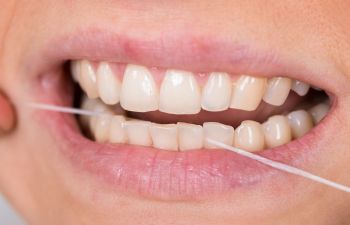
A flawless daily dental hygiene regimen involves brushing and flossing your teeth. You cannot skip the flossing! Brushing alone is an inadequate preventive measure against gum disease and tooth decay. Around 35% of teeth surfaces will not be cleaned by only brushing.
The toothbrush bristles cannot reach between your teeth to remove tiny pieces of food and plaque as floss can. That’s why it is critical you floss then brush your teeth every day. If you do not floss, plaque buildup along the gum line between your teeth can cause serious oral health problems.
Harmful Bacteria Accumulate in the Mouth if You Do Not Floss
Flossing is as vital as brushing, but many perceive it as an optional habit. According to a Dentists Association survey, only four in ten people floss once a day, and one in five people never floss, highlighting how most people dismiss the value of flossing. Perhaps, they do not know how or why they should do it.
Or maybe these non-flossers avoid flossing because when they do, their gums bleed. However, that is when one needs to floss more. Bleeding is a sign of bacteria accumulation from extended periods of neglect. It happens because there is gum inflammation from tartar or calculus buildup.
At this point, the individual needs professional dental assistance to scrape off the hardened buildup, because a toothbrush and floss will not do.
Flossing Benefits
Digging out a piece of food from between your teeth is relieving, but that is only the first of many benefits. Flossing’s other perks include:
- Plaque removal – bacteria in plaque release acids that destroy tooth enamel.
- Cavity prevention – plaque left on teeth leads to cavities.
- Tartar prevention – plaque turns into tartar over time, which causes gum disease.
- It helps prevent gum disease, which can cause tooth loss. Therefore, it also helps prevent tooth loss.
- It helps prevent heart disease. Gum disease allows plaque and bacteria to enter the bloodstream. Your risk of heart disease increases by 20% if you have gum disease.
- Keeps bad breath at bay – the bacteria in plaque causes bad breath, and so does decaying food stuck between your teeth.
- Brightens teeth and makes your smile more beautiful. Food particles and plaque do not look nice.
How to Floss
Floss before you brush your teeth. Doing it the other way around, the bacteria and plaque released from flossing remain in your mouth. Brushing after flossing ensures you remove the dislodged debris for good.
Pull out a piece of floss about the size of your forearm (or approximately 18 inches). Wrap both ends around your middle fingers, leaving a space of about two inches for your teeth.
Gently glide the floss between your teeth, allowing it to slide down between your tooth and gums until it cannot go any further. Make sure to do both teeth; there are two sides to clean per crack. Also, do not forget to floss the space between the tooth and gums of the back of the last tooth.
Flossing Keeps You Healthy
Flossing is a low-cost and straightforward way to stay healthy. Marietta’s dentist, Engineered Smiles, genuinely cares about your overall wellness. We encourage you to preserve your healthy smile by flossing every day as part of your oral hygiene routine. In addition, schedule an appointment for a dental checkup to ensure your teeth and gums are in good condition.
Posted on behalf of
670 Johnson Ferry Rd
Marietta, GA 30068
Phone: (678) 801-6700
FAX: (678) 903-2428
Email: niceteeth@engineeredsmiles.com
Monday: 9AM - 6PM
Tuesday: 8AM - 5PM
Wednesday: 8AM - 5PM
Thursday: 8AM - 3PM
Friday - Sunday: Closed



